Creating Business Card Designs: A Comprehensive Guide
Did you ever recognise how a plain sheet of card stock could have such an impact? I’m talking about business cards – those small, humble rectangles. Don’t be misled by their small size; these little ambassadors are influential in networking and building your brand.
Imagine it this way: the first physical introduction to you or your company usually uses a good business card. And, like every opening act, it sets the mood for any possible relationship or transaction. If done right, it can do marketing wonders; if not, that Card-catastrophe might end up in the nearest trash bin. Not much pressure, huh?
The stakes are so high that it’s understandable why companies sweat over every detail, from cardstock type down to colour scheme. But fear not, my friends! This guide to creating business card designs will teach you how to make ones that leave an impression (the good kind!)
Table of Contents
Top Tips for Creating Business Card Designs
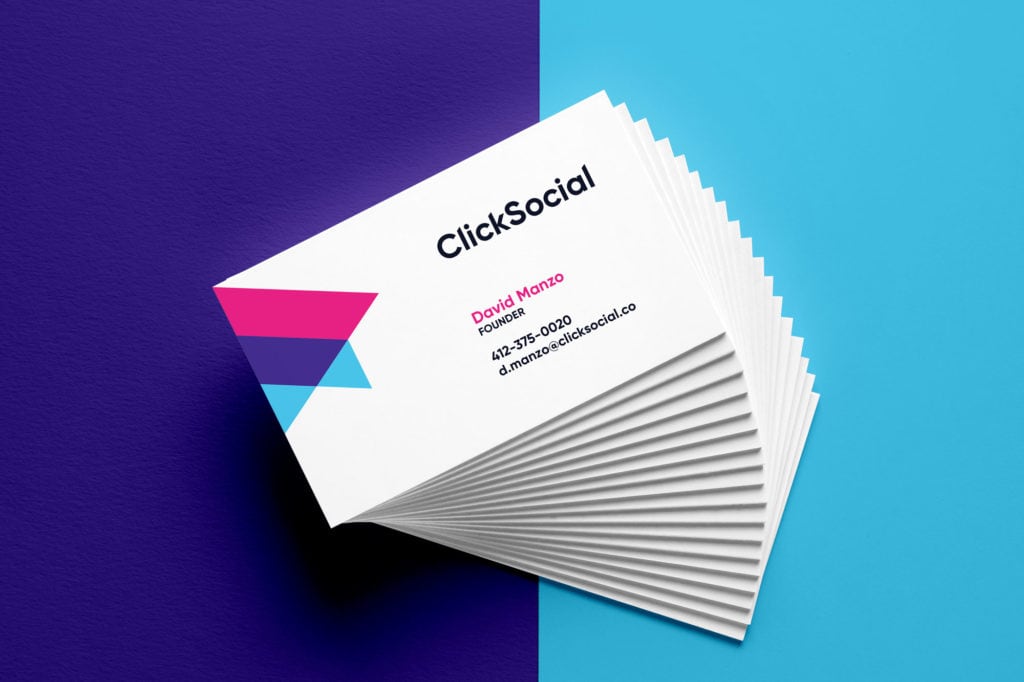
Let’s get right to it — everyone and their grandmother has a business card. From the barista at your local coffee shop to the CEO of a Fortune 500 company, wallets are stuffed with these little pieces of paper. So what can you do to ensure yours doesn’t get thrown away or (gasp!) lost in the shuffle?
The answer, my friends, is originality. And target audience. No more templates or blah designs that scream corporate boredom. It’s time to have fun and let your brand shine through.
Find Your Brand Voice
Before putting pen to paper (or mouse to graphics program), consider what your brand stands for. What values do you want people to associate with it? Should they feel like this is an established company or something new and quirky? Knowing these things will help guide all future design choices.
A high-end salon might choose sleek minimalism with pops of metallic accents, while a children’s party entertainer could rock a vibrant, whimsical look complete with playful typography. Do you see how the brand personality affects the creative direction?
Use Captivating Colours
Speaking of which — colour psychology! The shades you pick can subconsciously affect how someone perceives your card, but we’re not just talking about slapping on your logo colours and calling it good.
Warm tones like reds, oranges, and yellows give off feelings of energy, passion, and boldness, which are great for the fitness or entertainment industries. Blues and greens make people feel calm and secure, so lawyers’ offices, accountants, and healthcare providers who deal with sensitive information daily use them.
Don’t take my word for it; according to research at the University of Winnipeg, up to 90% (!!!) of first impressions are based solely on colour alone, so choose wisely, my chromatic comrades!
Content is King (or Queen)
Okay, so you've nailed down the branding basics and have a striking colour palette in mind. Kudos! But we're just getting started on this business card journey. Next up? Content – the meat and potatoes that inform while leaving recipients craving more.
The Name Game
This one's a no-brainer, right? Name, check. Title, check. But hold up – there's a bit more nuance to consider here. For starters, how large and prominent should your name appear? What about your title – should it take centre stage or play a supporting role?
Your name should be the clear focal point, allowing it to be read easily at a glance. But beyond that, it comes down to personal preference and how you want to position yourself. A big, bold name with minimal extras might work best for high-profile executives or realtors. In contrast, a designer or artist may want to make their title the star.
Data Dump or Concise Genius?
Now we're getting into the nitty-gritty, folks. Choosing what contact details to include (and exclude) is an art form. You've got to strike that delicate balance between providing ample info and keeping things clean and clutter-free.
Generally, stick to your website, email, and phone number – the key connectors folks will use. But feel free to get a bit cheeky with your job title or tack on a compelling tagline. Just keep it brief and steer clear of ultra-tiny fonts that require a magnifying glass.
QR Codes – Fad or Fabulous?
In this digital age, more and more business cards are incorporating QR codes that zap recipients directly to your online presence. It's a pretty nifty way to showcase multimedia content, share contact details effortlessly, or drive traffic to your website.
They can look a tad busy and won't work for everyone. For instance, if your target market skews older or less tech-savvy, that QR code may confuse matters. So, weigh the pros and cons based on your industry and demographic.
Layout and Design Mastery
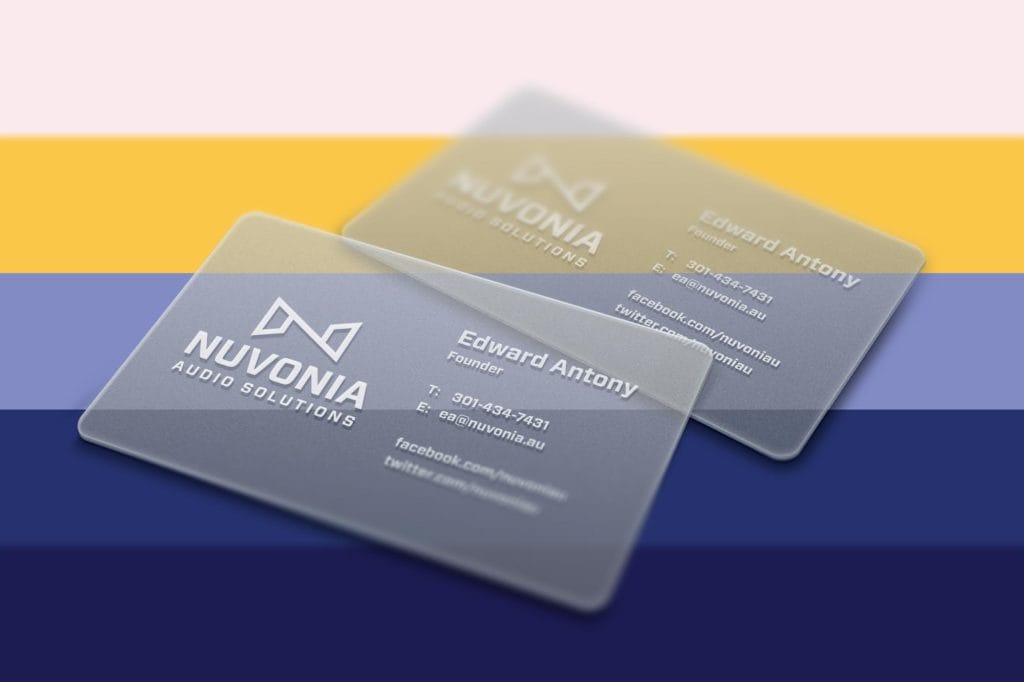
Contents? Checked. Colours and branding? Double-checked. Now comes the part where you should combine them in a seamless, mouthwatering design. This is your chance to cook up something special.
Big or Small (Seriously)
Do you know those cards that are so small you need a magnifying glass to read them, or on the flip side, those huge ones that won’t fit into any wallet or holder? Yeah, don’t be either of those.
The standard business card size is 3.5″ x 2″ (or 89mm x 51mm for our metric friends). It’s a conveniently portable dimension that slips easily into pockets, pouches and purses alike — with enough room left over for design elements not to look crowded. Think of it as the Goldilocks zone of card sizes: not too big, not too small.
Portrait or Landscape?
To turn your card horizontally or vertically — that is the question. While both orientations are fair game in business, most people stick with horizontal design (a.k.a. landscape). Why? It mimics the natural flow and dimensions of most names and contact info.
Playing with orientation can be a fun way to break away from boring templates. A vertical format immediately stands out and creates a fresh, memorable look — just beware that it might not tuck as neatly into standard cardholders.
Let It Breathe
In the design realm, they call it “negative space.” We prefer “breathing room.” Whatever you want to call it, just don’t forget about it! Crowding every square inch of your card with text or graphics makes it impossible for anyone to focus on what matters — how terrific your company is or how they can get in touch with you.
Instead, opt for an open layout with generous margins and strategic pockets of “air.” This refined approach communicates professionalism and legibility. It’s like design’s version of less is more — a phrase that should be tattooed on every artist’s forearm.
Images That Tell a Story
To picture or not to picture? That is the million-dollar question for many card creators. When used tastefully, graphics like logos, icons and high-resolution photos can take an otherwise forgettable design to the next level — adding meaning, personality and recognition at a glance.
But watch yourself, art snob. Dated clip art, cheesy stock images or overly complex illustrations can have the opposite effect — making your card look tacky or cluttered. If you use pictures, stick to one or two simple, clean, high-resolution elements that complement (rather than compete with) the typography and layout.
Font Fun
Typography: the unsung hero of design that can make or break a business card faster than you can say “kerning.” With thousands upon thousands of typefaces at your disposal, it’s easy to get carried away or fall into ho-hum habits.
As a general rule of thumb, limit yourself to no more than two complementary fonts — one for the name/headlines and one for the body copy. Ensure they’re clean, readable and sized appropriately for easy legibility. Please, I beg you to stay away from Comic Sans unless laughter is part of your brand identity!
Unconventional Touches for Unparalleled Impressions

We did the basics: content, branding, and layout. But why stop there? If you want to amaze and captivate people with your business card — make them remember it forever — then you’ll have to shake things up a little.
Different Textures and Finishes
Who said your business card has to be made of matte or glossy paper? Experimenting with different finishes or textures can create more of an art piece than a card.
Imagine feeling a thick cotton card between your fingers that’s been engraved with a slightly raised design. Or what about one made from translucent plastic, which seems to glow from within? Go all out with metals, wood veneers or even fabric!
These treatments add an extra level of intrigue for those who receive them, and they can also help express what kind of brand personality you want people to associate themselves with when they think about who gave it to them—finished on recycled kraft paper. Earthy and eco-friendly vibes all around! Shiny like a mirror? Boldness meets cutting-edge style statement. Do you get me now?
Creative Shapes Are Fun
Here’s a revelation – no written rule states that business cards must be rectangular. I know, right?! Well, my friend, this means die-cutting could turn your humble little rectangle into a mini work of art.
The possibilities are endless! Go circular or triangular if you want; try some wacky abstract thing. Just remember not everyone has pockets, so keep them wallet-friendly size-wise (unless they wear cargo pants). Think outside the box but inside their pockets, too!
Foldable Multi-Piece Cards
Now, hear me out before clicking away from here, thinking I’ve officially lost my mind… What if instead of having one surface for all information like most boring old traditional cards, we went crazy and had lots?
Picture someone opening up their card only to find they’ve got an extra few panels on each side hiding more about you or, even better – a second “hidden” card inside with some other secret squirrel stuff printed on it—experiential marketing win.
Let’s Get Multimedia
In case you haven’t noticed, everything is digital these days. But print isn’t dead; it’s just taken a little vacation and returned with some cool friends like animation and video! So why not combine the two and make your business cards sing, dance… dazzle?
Now I know what you’re thinking – this sounds expensive! Yes and no. You’ll need to set aside some budget for design/printing, but think about how many people will be talking about when they get handed one of those cards with an embedded screen playing an advert for your company. Exactly.
Imagine handing out a QR code-laden paper that springs to life when scanned, showing off slick promo reels or 3D models of your products. Or slapping NFC chips onto business cards so when someone taps it against their phone (which you have pre-programmed), they get sent straight through your introductory audio message. Crazy right? But I bet it would get people talking!
Packaging Is Everything
Remember — first impressions count — so don’t just hand over your card in any old way!
It’s all a matter of creating an unforgettable experience that will stay with the people involved long after they’ve parted ways. Regardless of your direction, always keep things surprising because nothing is more boring than knowing what will happen next.
Printing Prowess
Okay, we've explored a veritable wonderland of ambitious concepts here. And you're probably thinking, “This is all great in theory, but can these wild designs be produced?”
The answer? Absolutely! While standard business card printers can churn out essential colour pieces just fine, a bevvy of commercial printing outfits offer an array of premium techniques to bring your creative visions to life.
We're talking letterpress and engraving for those deliciously textured impressions. Spot UV coatings that make selective elements pop with high-gloss dimensionality: foil stamping and embossing/debossing for unparalleled luxe finishes. Even die-cutting services that transform ordinary rectangles into miniature sculptural masterpieces.
In today's digital age, some printers can incorporate video screens, RFID chips, sound modules, and other multimedia marvels. If you can dream it up, there's a printer prepped to make it happen. Of course, you'll need to scout and vet providers to find the ideal match for your specifications and budget. But rest assured – no concept is truly off-limits regarding business card innovation.
Consider Your Card's Lifecycle
As fun as it is to geek out over fancy printing methods, keep sight of your card's practical applications, too. A good design accounts for that initial “wow” moment and how the piece will endure and function long-term.
For example, intricate cut-outs and ultra-thick textured stocks might seem stellar. But will those delicate details hold up to repeated stuffing in wallets and pockets? On the flip side, you'll also want to avoid ultra-thin or glossy finishes prone to cracking, scratching, or smudging over time.
The key is finding a sublime spot between aesthetic impact and lasting durability. With the proper planning and paper selection, you can fashion cards built to withstand the rigours of real-life – emerging from bottomless handbags and overstuffed billfolds looking as crisp as the day they were printed.
Measuring Your Card's Success
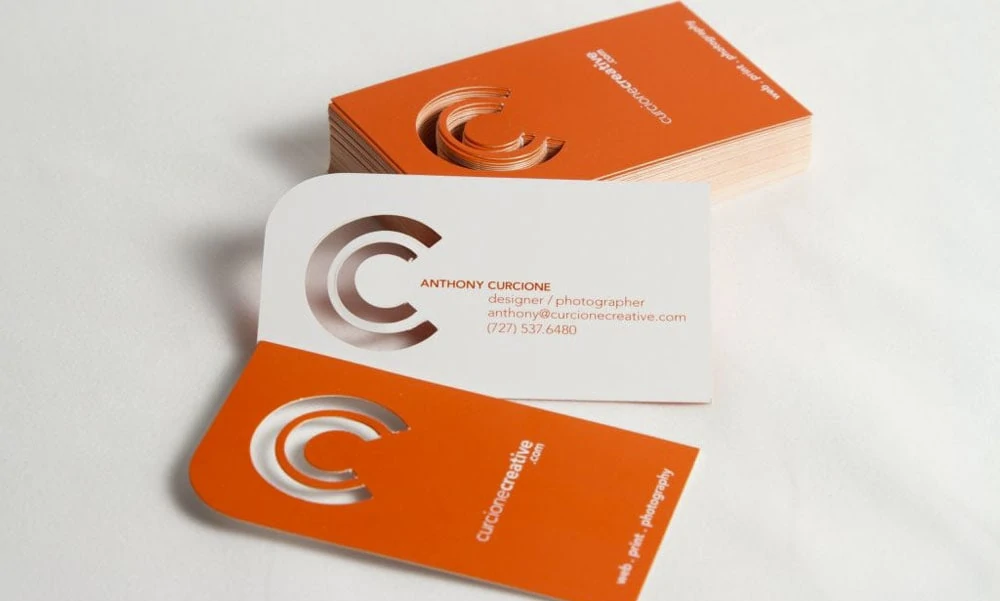
You've put in the hard work – nailing the branding, agonising over content, and pushing creative boundaries with jaw-dropping production elements. Give yourself a well-deserved pat on the back! But we're not entirely done yet.
In our data-driven world, assessing your business card's performance is as critical as its conceptualisation and execution. A captivating design might inspire oohs and ahhs as it exchanges hands. But how do you definitively gauge whether it's making a tangible impact on brand awareness, lead generation, and your bottom line? Luckily, there are a few analytical tricks up our sleeves:
Track Your Card's Journey
Before distributing your freshly minted cards to the masses, consider implementing a system to monitor each piece's unique path and engagement rates. This could involve incorporating QR codes funnelling recipients to a custom landing page, logging interactions via integrated NFC/RFID chips, or utilising call tracking numbers to attribute incoming leads.
Maintaining a centralised database lets you pinpoint top-performing locations, events, and individual reps while identifying potential leaks in your funnel. For example, if you notice specific batches generating sky-high redemptions while others flatline, you'll know to double down on the winners and tweak the duds.
Survey Your Audiences
In addition to backend data, there's also immense value in good old-fashioned human feedback. Make it a point to survey clients, leads, and other vital contacts shortly after business card exchanges. A few simple questions can help assess initial reactions, lasting memorability, perceived brand alignment, and overall effectiveness.
How many recalled your specific card design or messaging weeks later? What emotional impressions did it leave – and did those align with your desired brand persona? You could even take cues from the negative critiques, uncovering potential blindspots or areas for design refinement.
Integrate With Broader Metrics
Of course, your business card's performance can't be evaluated in a vacuum. Its ultimate success is tied to metrics across your broader sales and marketing initiatives. Maybe your new card helped spike website traffic but had no discernible impact on foot traffic or conversions. Such insights enable more imaginative attribution modelling and guide where to double down.
The bottom line? You can understand how this critical collateral piece influences your marketing and branding efforts by syncing card insights with your existing reporting infrastructure – CRM data, web analytics, sales figures, etc.
Creative Card Samples to Admire
All inspirational words aside, sometimes the best way to fuel creative energy is by observing stand-out examples in action. With that in mind, let's spotlight some of the most brilliant business card designs worthy of admiration:




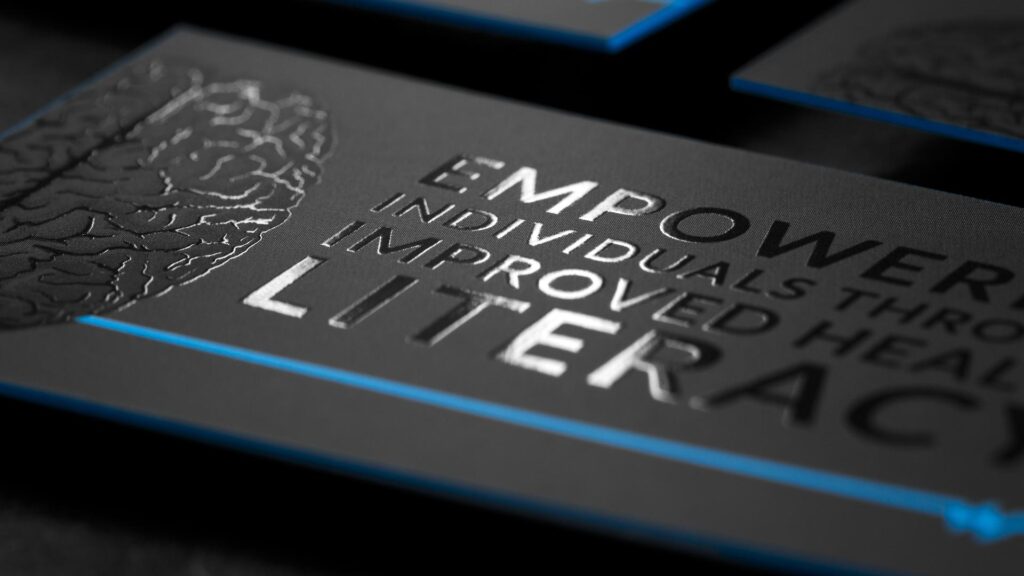
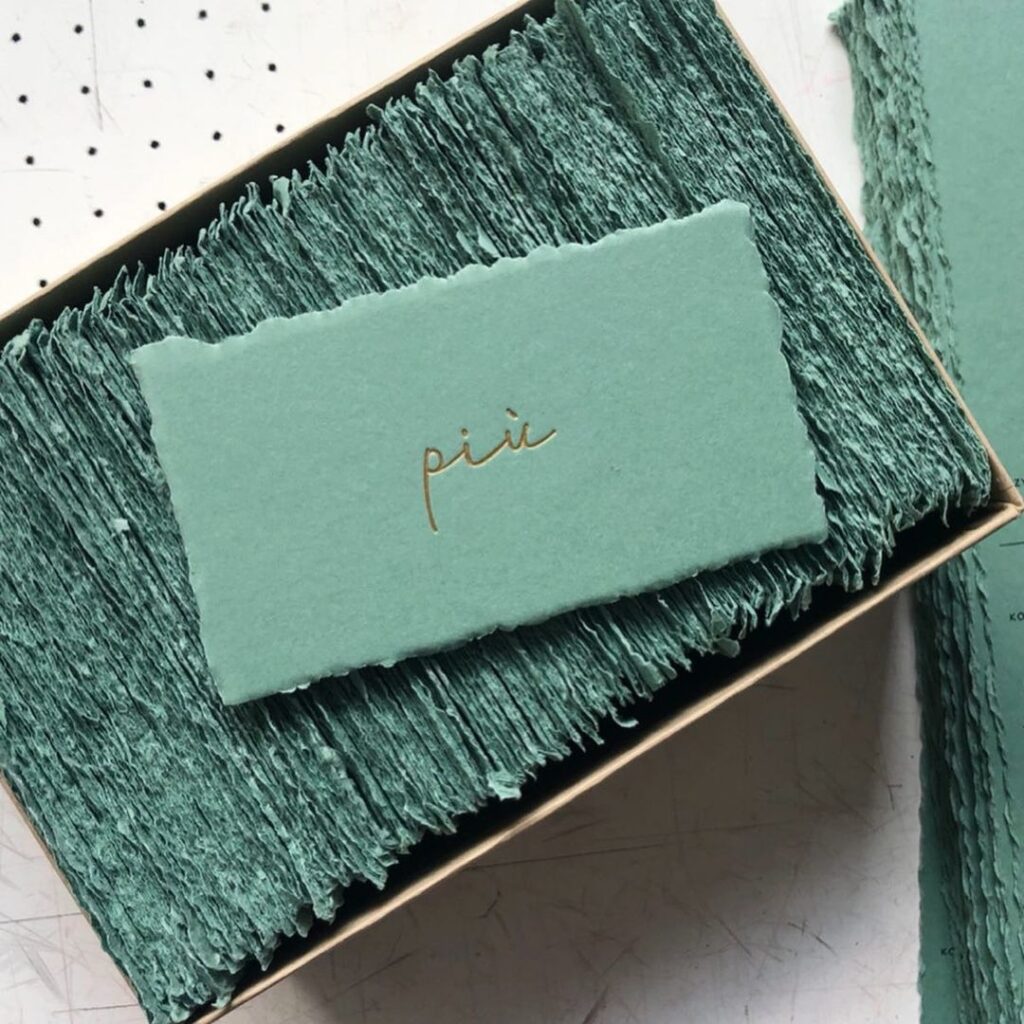
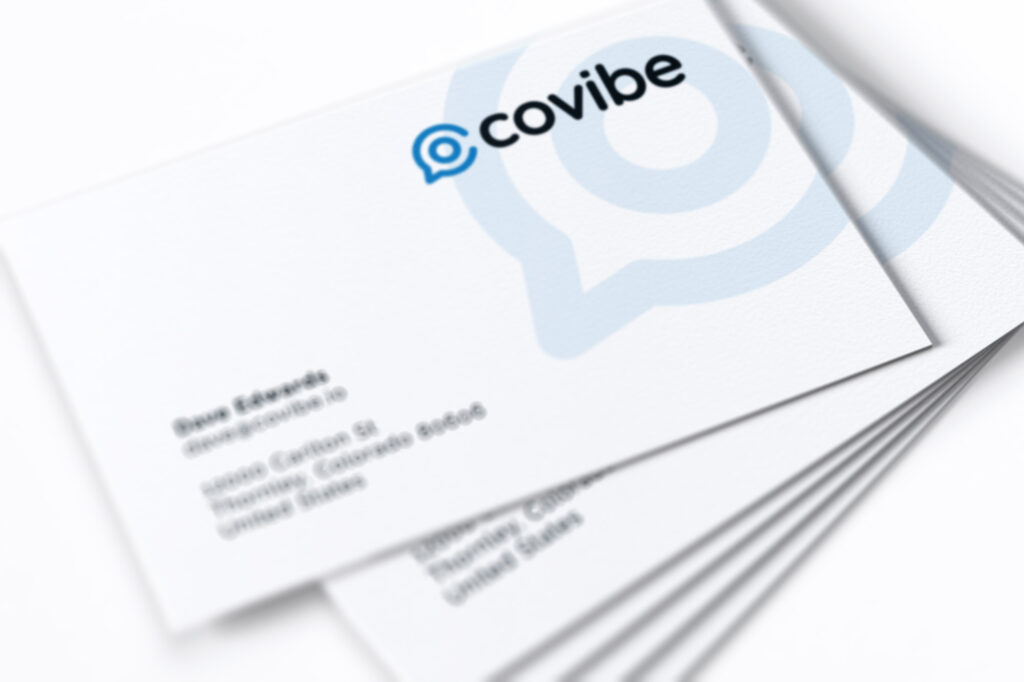
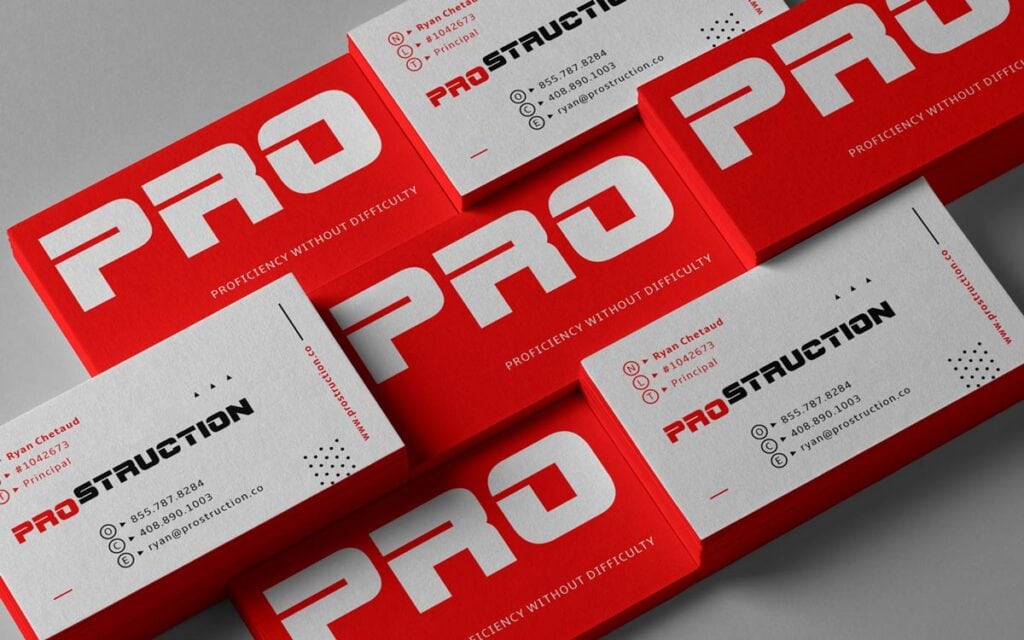

Notice any common threads among these impressive specimens? While they vary wildly in aesthetics and target industries, each exemplifies our principles – concise branding, audience-centric design, strategic use of imagery/typography, and unbridled creativity.
By blending best practices with fresh thinking, these cards transcend basic “here's my info” functionality to become bona fide marketing assets. Artefacts their recipients will pine to pick up, engage with, and proudly display as conversation pieces. Above all else, that lasting brand imprint truly separates the mediocre from the magnificent in this pocket-sized creative realm.
Final Thoughts (And a Few FAQs!)
Whew, what a journey we've embarked upon! From dissecting the fundamentals of colour and content to pushing creative boundaries with unexpected materials and multimedia elements, this guide transforms your perception of business cards from necessities into compelling art forms.
But even armed with all these insights and examples, you might still have some lingering queries. No sweat—I've saved some space for those nagging business-card-related questions:
Can't I use an online service or word processor to whip up a decent card myself?
While those essential tools are convenient for prototyping, you'll likely need professional design software and printing services to achieve premium results. Simplicity can be stylish, too, if that's your vibe!
How often should I update or reorder new cards? My info never changes.
Many businesses find refreshing their card design every 2-3 years helps keep things modern and on-brand. Plus, info changes happen – so replace depleted stashes as needed.
What's a reasonable budget for fancy printing techniques like letterpress, foil stamping, etc.?
Prices vary wildly by printer, but you can expect to pay $1-$3 per card for basic premium finishes and up to $5 or more for highly elaborate customisations.
Ugh, all these choices are overwhelming! How do I narrow things down?
If you're indecisive, start by weighing factors like your industry norms, target audience, branding goals, etc. Or engage a professional designer to guide you.
Are vertical business cards just a fad?
Nope! While the landscape orientation remains the most common, the vertical format is an increasingly popular and legitimate stylistic choice.
How can I ensure my business card is on-brand and consistent with my other marketing?
You can maintain a unified look across all touchpoints by establishing a cohesive set of brand guidelines covering colours, fonts, logos, etc.
What are some affordable multimedia options to consider?
QR codes are an easy entry point, revealing videos, audio, and more. NFC chips are another emerging mobile tech that can facilitate seamless interactions.
So there you have it, folks! The tools, tips, and inspiration to elevate your modest little business card into something extraordinary. But in the end, the actual litmus test boils down to one fundamental question: If you received your card cold, would it spark curiosity, convey brand ethos, and leave you craving to learn more? Strive for that reaction; creating business cards won't feel like work – it'll be sheer art.

We print hundreds of business cards where I work. I love to see creative cards (cards made of wood for a lumber company, transparent cards for a window company), but over time, many businesses who spend the big dollars on these flashy cards will often revert back to simpler, less expensive cards because they know their card will inevitably end up in a drawer, along with all the other business cards the prospective client has been handed. I think it’s important to have a beautifully designed card, but I’m on the fence about whether it’s worth it to invest in the flashy (often gimmicky) cards.